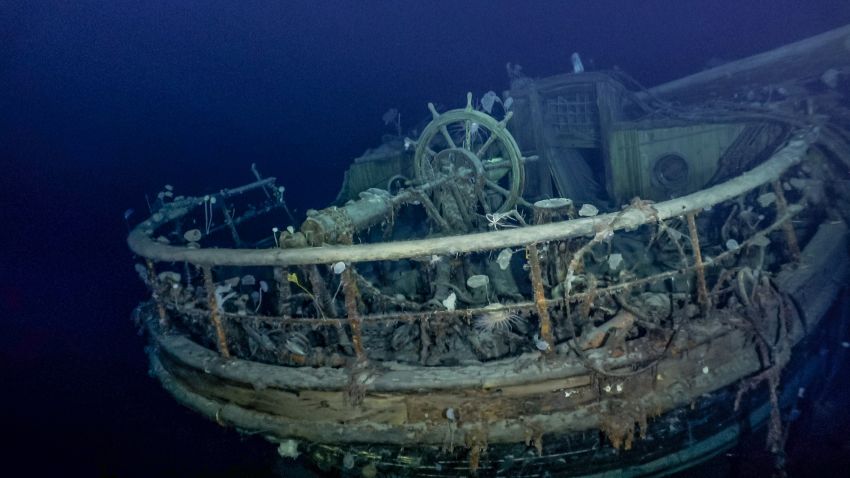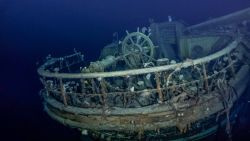Sometimes shipwrecks contain sunken treasure, cargoes of gold or jewelry that tempt bounty hunters to risk treacherous seas in pursuit of lucrative rewards. Other shipwrecks are themselves the treasure – the stories of their ill-fated voyages creating a legend that makes them sparkle far more than any bullion or precious stones.
The wreck of HMS Endurance, which has finally been located deep beneath the icy seas of Antarctica after being lost 107 years ago, was arguably the most valuable shipwreck ever sought. That’s because its discovery adds another thrilling new chapter to an already gripping tale of perseverance and survival that has echoed down the decades and still inspires today.
Incredibly well preserved at a depth of almost two miles, the ship is little changed from the day in November 1914 when it finally sank beneath the ice.
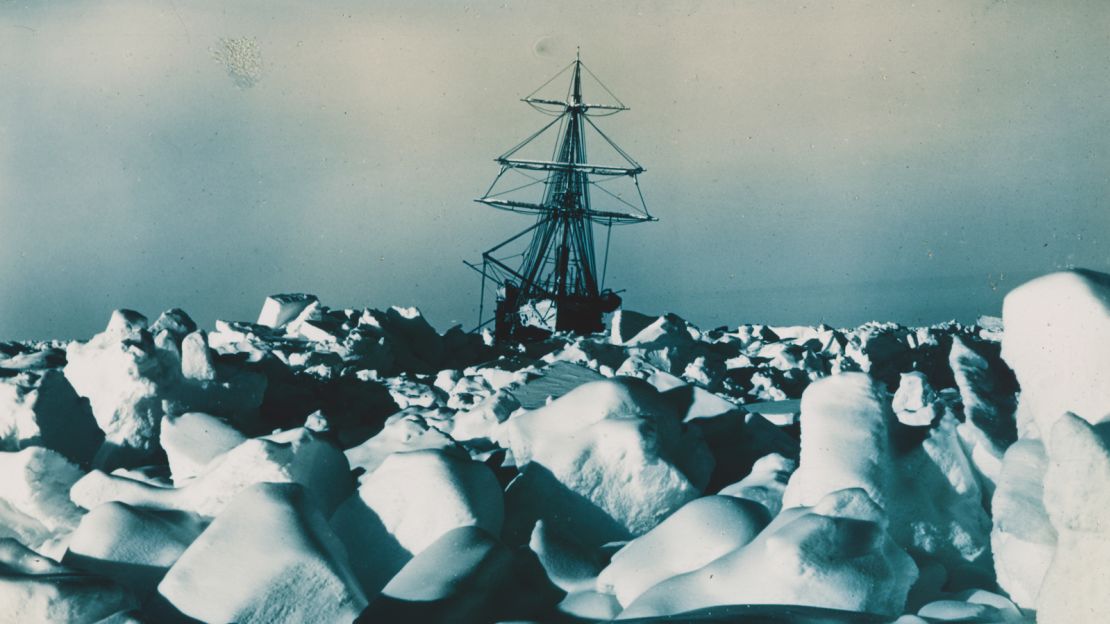
Submersible video shot by Endurance22, a mission launched by the Falklands Maritime Heritage Trust to track down the vessel, shows painted timbers, an undamaged guardrail and the name “Endurance” written above the five-pointed symbol of a polar star.
Those on the discovery expedition have spoken of the emotional experience of tracking down the lost vessel through hazardous ice floes and reconnecting with the very ship that carried Anglo-Irish polar explorer Ernest Shackleton on the fateful journey from which he and his crew would, against all the odds, emerge as some of the 20th century’s greatest heroes.
“I tell you, you would have to be made of stone not to feel a bit squishy at the sight of that star and the name above,” Mensun Bound, the mission’s marine archaeologist, told the BBC. “You can see a porthole that is Shackleton’s cabin. At that moment, you really do feel the breath of the great man upon the back of your neck.”
Grand ambitions
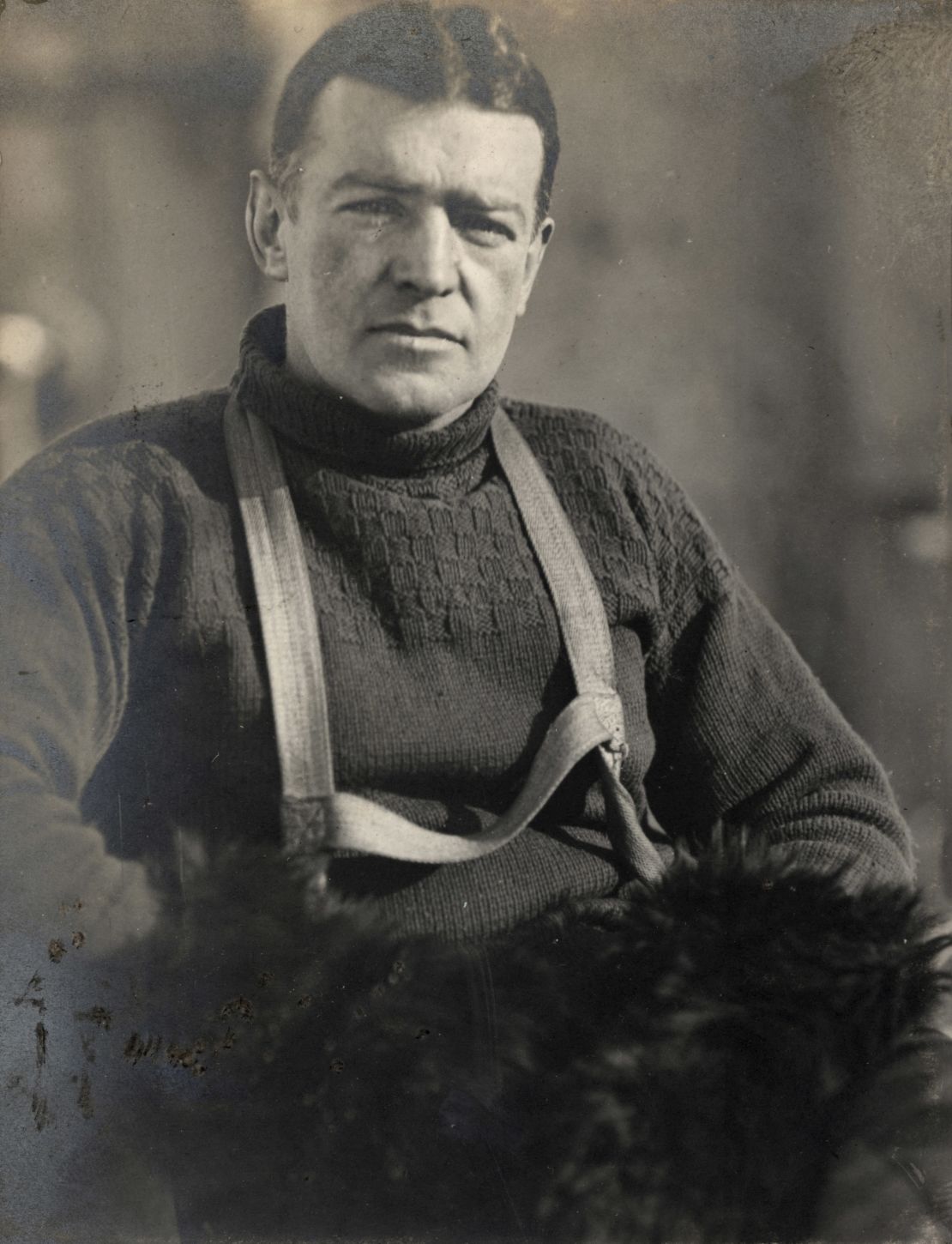
The reason why Shackleton is still lauded as a “great man” at a time when the reputations of other historical figures are crumbling under scrutiny of their exploitative successes becomes obvious when you consider what he achieved in the face of disasters and hardships during his 1914-16 expedition.
The practicality and humanity he showed in the face of adversity was arguably not unlike that for which Ukrainian leader Volodymyr Zelensky has been globally praised in the wake of Russia’s invasion of his country.
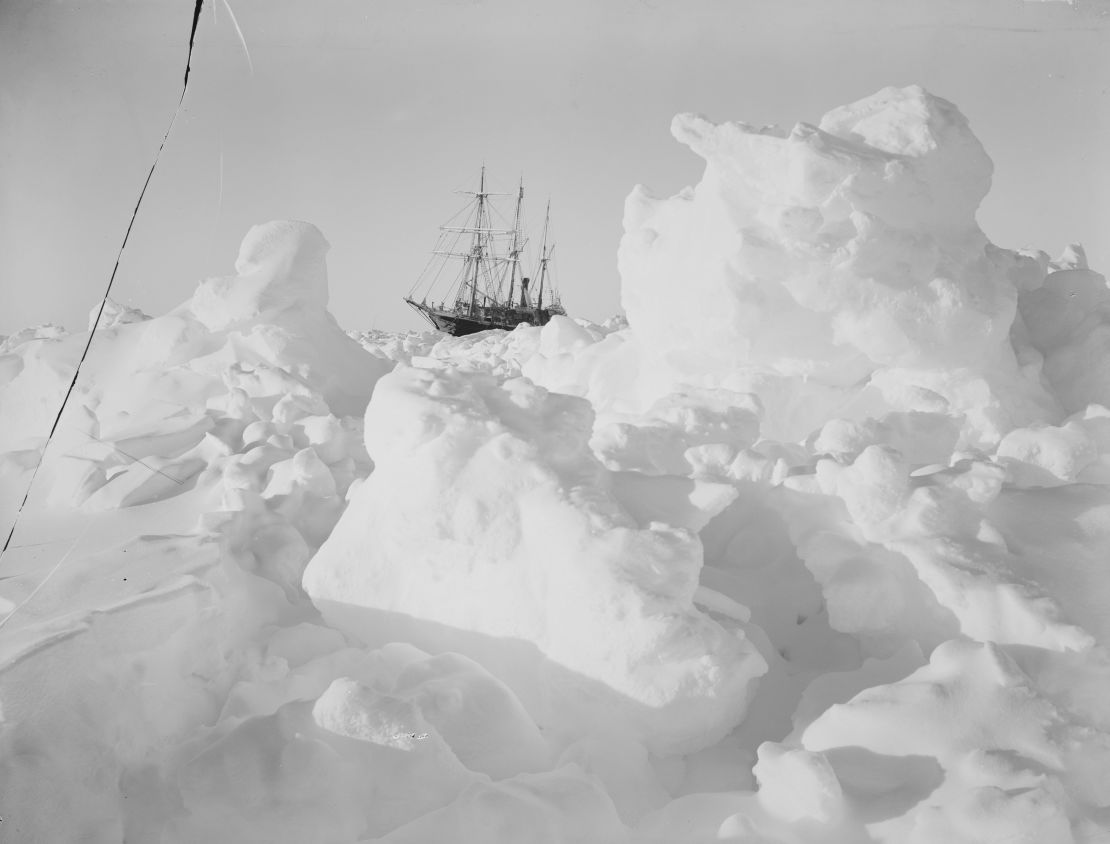
Prior to the Endurance voyage, Shackleton had established himself as a polar explorer after a career in the merchant navy. He had to leave a 1906 Antarctic expedition due to ill health, but led another successful one south in 1908. His exploits earned him a knighthood, becoming Sir Ernest Shackleton in 1909.
Shackleton’s final Antarctic mission started with grand ambitions. Having recruited 27 men, he was hoping to lead some of them on the first-ever full crossing of Antarctica by land, just a couple of years after Norwegian Roald Amundsen had become the first person to reach the South Pole.

By December 1914 they were on board the Endurance, a three-masted ship equipped with a reinforced wooden hull and a steam engine, on course for the White Continent.
By all accounts, the ice was worse than usual that year. Though it was summer in the Antarctic, the Weddell Sea was still frozen from winter and Endurance struggled to find leads of open water to navigate to the point where Shackleton had hoped to begin his trek. Unwisely choosing to press on, they became stuck.
Attempts were made to liberate Endurance as the weeks pressed on and the ice sometimes broke apart, but she remained more or less frozen in place, but all the while moving as the ice pack drifted.
On February 24, 1915, with winter advancing, the expedition decided to hunker down in the hope of breaking free when summer rolled around again.
Icy incarceration
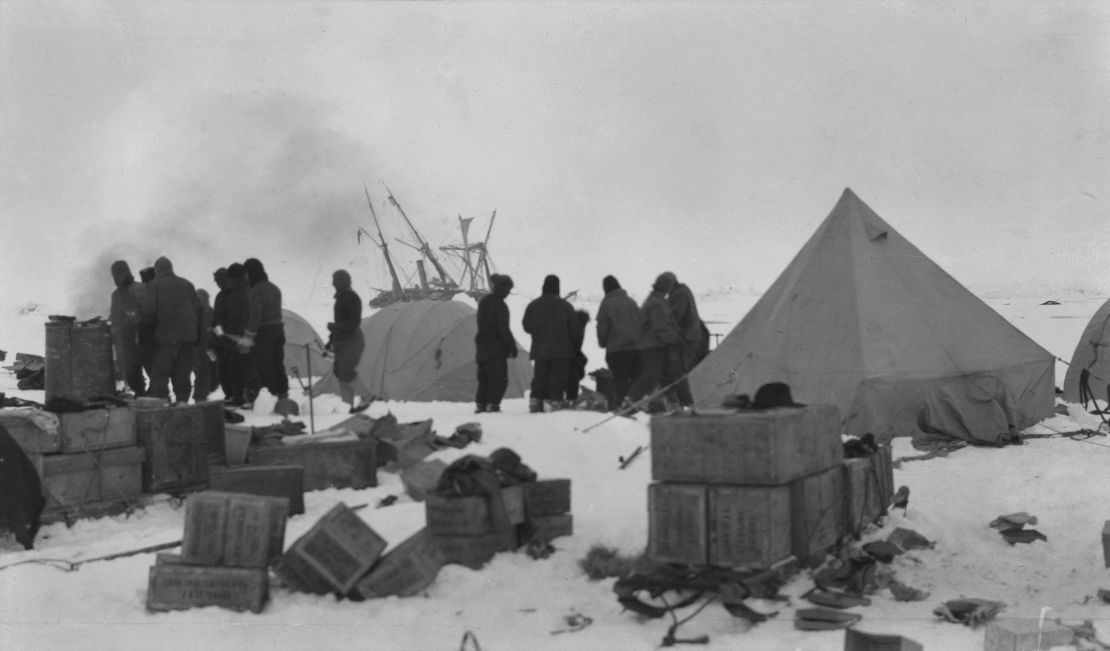
A “land station” was established on the ice. Sled dogs were moved off the ship and billeted in snow-built “dogloos.” Seals and penguins were hunted to feed the crew and animals.
Endurance’s icy incarceration during these months would be the first of many major tests of Shackleton’s skills as a leader. Morale was challenged, but “the Boss,” as the crew called him, kept his men busy with regular forays into the white landscape, soccer and hockey matches and other scientific and nautical work. There were social events to mark significant calendar days. Also, practical jokes.
These days, recorded in the diaries of various crew members – and later by Shackleton in his page-turning book “South!” – were also documented on film and in photos by Frank Hurley, the expedition’s official photographer. Hurley’s hauntingly beautiful images of the trapped ship and the stark icy landscape have played their own part in building the Shackleton legend over the years.
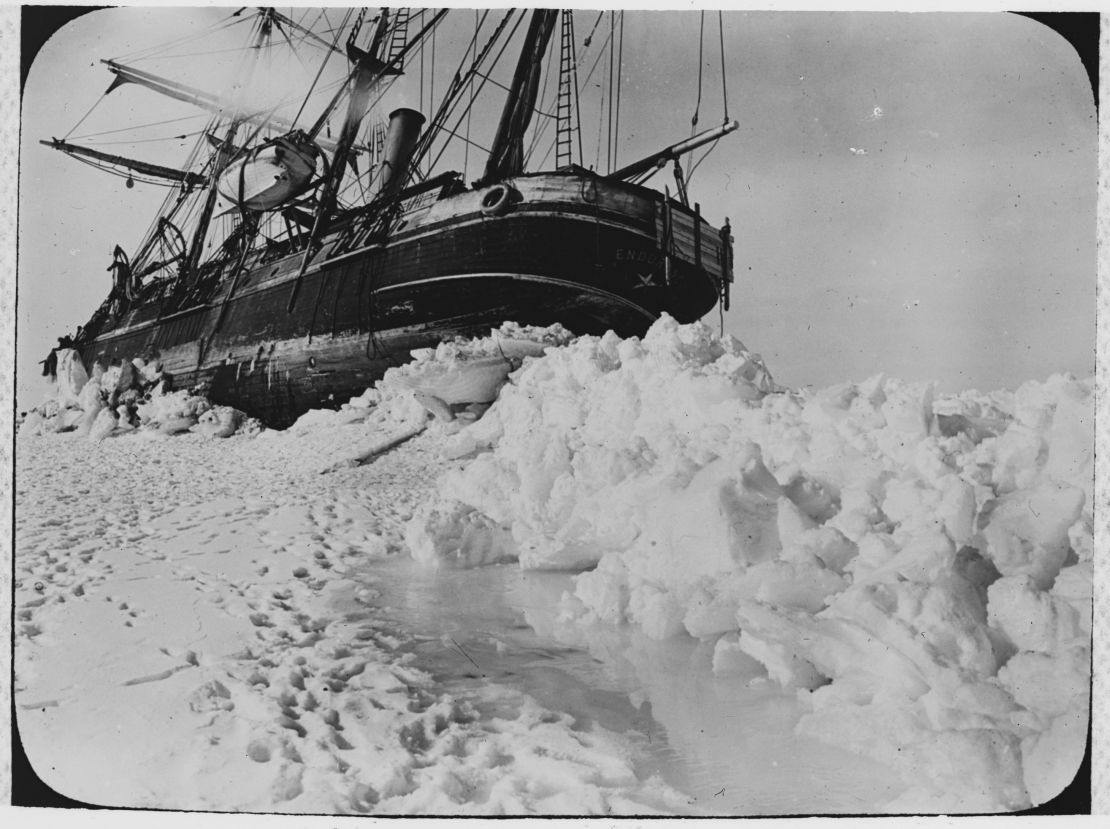
Despite various attempts to free Endurance, she remained trapped throughout the dark, storm-lashed months of winter. Then, in October, with the ice shifting and grinding around it, the boat succumbed to the immense pressures of the frozen landscape and was forced on its side, its hull damaged and taking on water. The order was given to abandon ship.
It’s here that, according to those who’ve studied Shackleton’s achievements, he showed his true mettle as a leader, switching objectives from walking across Antarctica to getting him and his men out alive.
Thousands of miles from civilization, with no means of communicating with the outside world, Shackleton and his crew could only watch as the ice slowly crushed Endurance, eventually sinking her several weeks later. The ship’s captain, Frank Worsley, used his navigation skills to record Endurance’s final resting place – coordinates which successfully helped the 2022 mission locate her.
A floating cake of ice
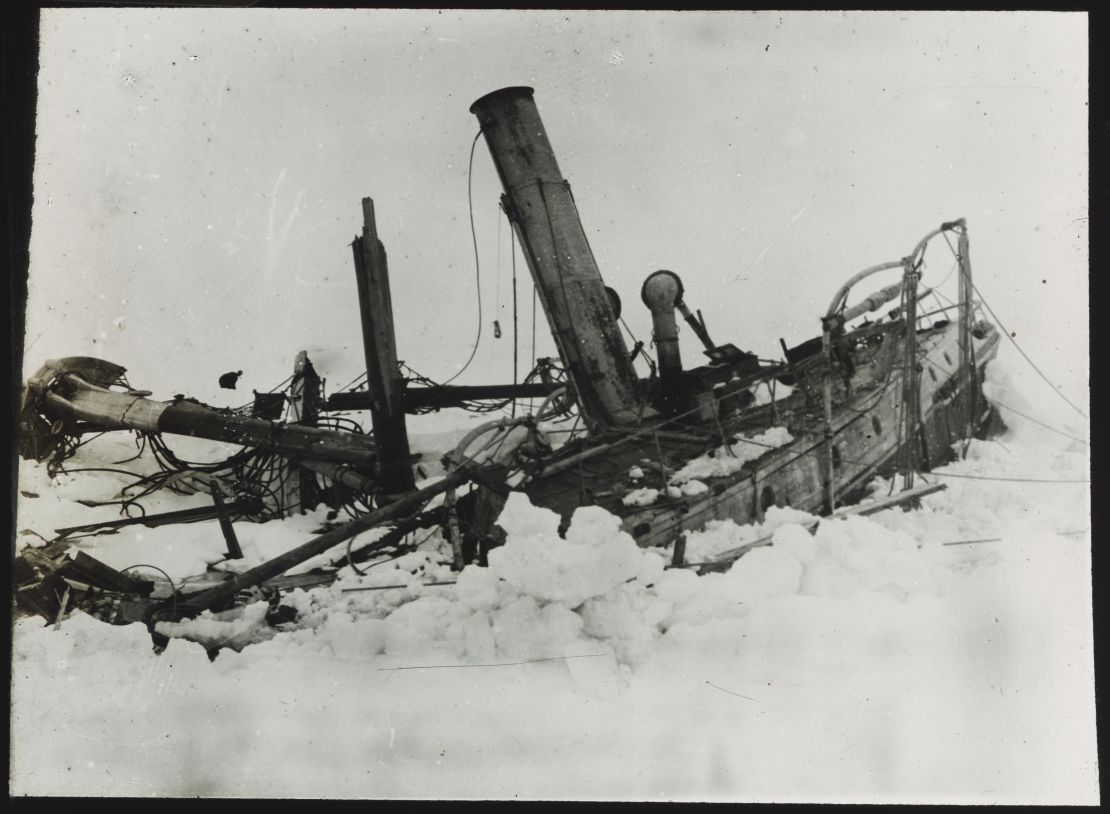
Christmas came and went, all the while the team were drifting on a shrinking piece of floe, eking out the remainder of the ship’s supplies supplemented by hunted penguins and seals. They had with them Endurance’s three small wooden lifeboats, but needed to wait until land was close enough to launch them.
There were disagreements. Not everyone agreed with the Boss’s decision to shoot some of the dogs and “Chippy,” the ship’s cat to eliminate the burden of looking after them. But as they waited for their moment to strike out for shore, Shackleton was lifted from bleak moments by the resilience of his men.
“There were 28 men on our floating cake of ice, which was steadily dwindling under the influence of wind, weather, charging floes, and heavy swell,” he wrote in “South!”
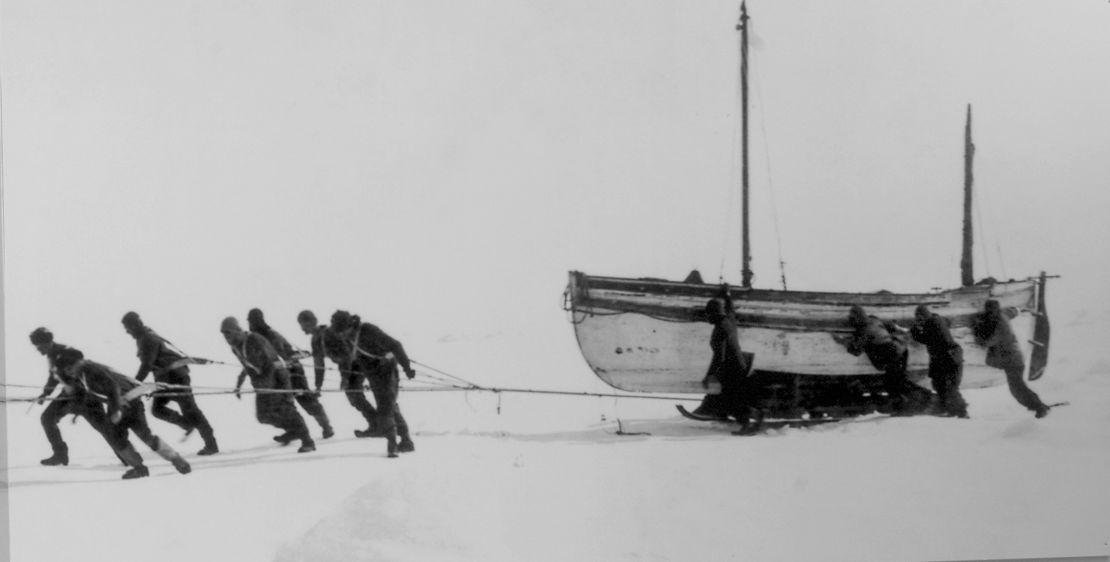
“I confess that I felt the burden of responsibility sit heavily on my shoulders; but, on the other hand, I was stimulated and cheered by the attitude of the men. Loneliness is the penalty of leadership, but the man who has to make the decisions is assisted greatly if he feels that there is no uncertainty in the minds of those who follow him, and that his orders will be carried out confidently and in expectation of success.”
By April 11, 1916, as their ice floe broke apart, Shackleton and the Endurance crew took to their lifeboats, spending several days grimly huddled together, battling seasickness, drenched by freezing seawater and ravaged by thirst. Progress was slow, but on April 15, they celebrated giddily after making their first landfall in 18 months on desolate and uninhabited Elephant Island.
Just days later, with the physical and mental health of his men in decline, Shackleton and four other men including Endurance skipper Worsley, and carpenter Harry McNish embarked on the riskiest portion of their journey – an 800-mile crossing of violent seas to the island of South Georgia, where a whaling station offered hope of rescue.
They spent 16 days at sea in the 22-foot lifeboat, often bailing for their lives as gigantic waves crashed over the boat, but when they eventually put ashore, their tiny vessel too damaged to go further, they were on the wrong side of the island, a formidable mountain range between them and the whaling station.
Nevertheless, Shackleton pressed on, leaving two of the team on the shore and crossing the uncharted interior with two others, Worsley and Irish veteran seaman Tom Crean.
Just in time
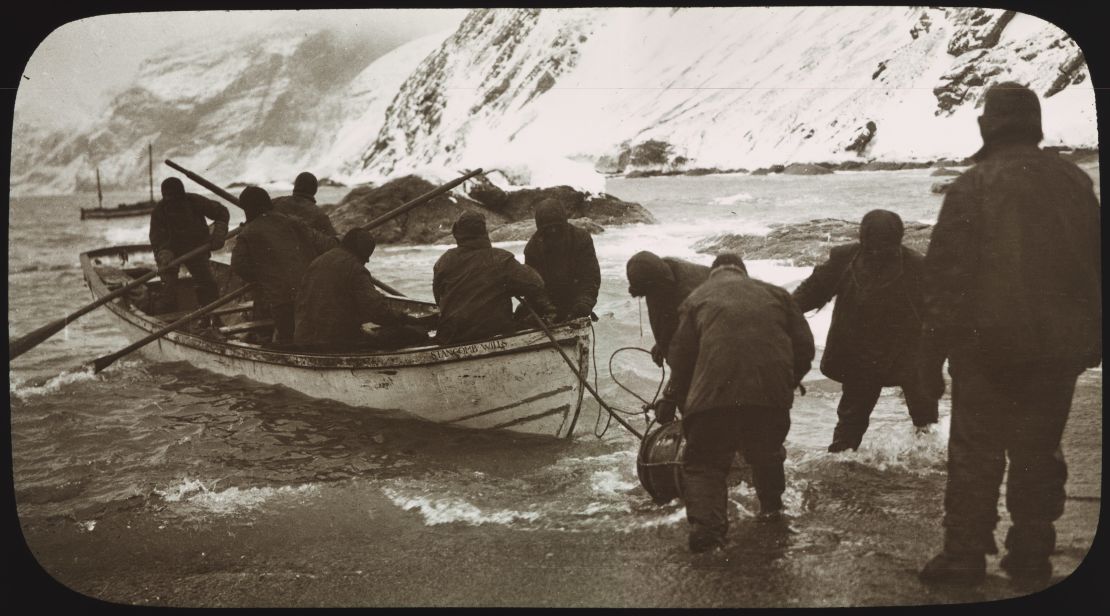
They scaled ridges of up to 3,000 feet, traversing glaciers, detouring around precipices and climbing down through a freezing waterfall before walking ragged and exhausted into the whaling station at Stromness Bay. There, to their great relief, manager Thorlaf Sørlle immediately offered them food, shelter and assistance.
“Mr. Sørlle’s hospitality had no bounds,” Shackleton wrote. “He would scarcely let us wait to remove our freezing boots before he took us into his house and gave us seats in a warm and comfortable room.
“We were in no condition to sit in anybody’s house until we had washed and got into clean clothes, but the kindness of the station-manager was proof even against the unpleasantness of being in a room with us. He gave us coffee and cakes in the Norwegian fashion, and then showed us upstairs to the bathroom, where we shed our rags and scrubbed ourselves luxuriously.”
While Shackleton’s crew mates on the other side of South Georgia were quickly rescued, the rough seas and ice around Elephant Island thwarted repeated attempts to save the 22 men, including second-in-command Frank Wild, still camped there.
Shackleton refused to give up and on August 30, successfully reached them as they were down the last of their food rations.
Not a single man had been lost.
From there they sailed for Chile, eventually arriving on September 3, 1916 at Punta Arenas to messages of congratulations and support from around the world.
Shackleton’s mission had been an abject failure, but his success in keeping alive his crew and ensuring their safe rescue was a triumph that far transcended any expeditionary glory.
